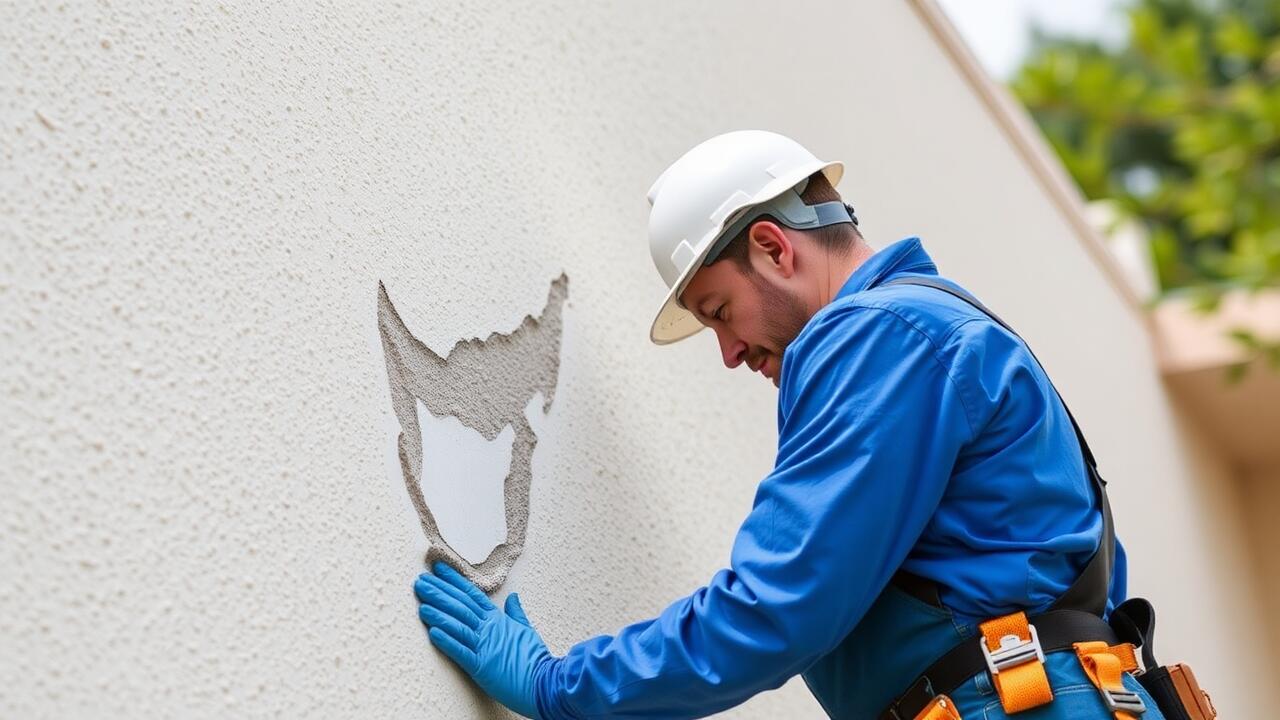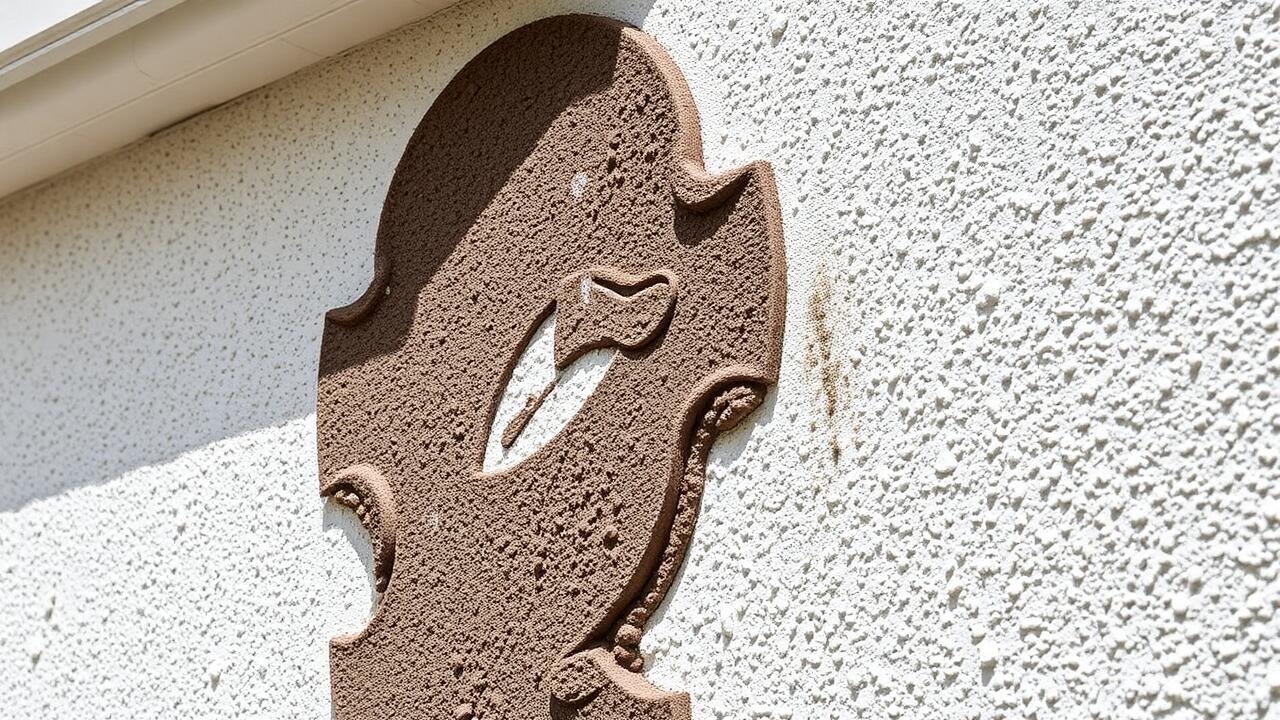
Curing Time for Quikrete Stucco Repairs
When using Quikrete for stucco repairs, proper curing time is essential to ensure durability and strength. Typically, Quikrete products may require at least 24 to 48 hours to cure effectively. Environmental factors such as temperature and humidity can influence the curing process. A temperature above 50°F and moderate humidity levels contribute to optimal results. Rushing this process can lead to cracking, shrinking, or other structural issues compromising the repair's integrity.
For those undertaking Stucco Repair in Encino, Los Angeles, it is wise to consider seasonal weather patterns. High temperatures and low humidity commonly seen in the summer can cause rapid drying, which might necessitate additional curing methods like misting. Conversely, cooler, more humid conditions can slow down curing times, requiring patience. Following the manufacturer's guidelines and being mindful of local climate conditions can lead to a successful stucco repair project.
Factors Affecting Drying and Setting Times
The drying and setting times of Quikrete used in stucco repairs can vary significantly based on several environmental conditions. Temperature plays a critical role; higher temperatures accelerate the drying process while lower temperatures can slow it down, potentially affecting the integrity of the repair. Humidity levels also impact curing, as a higher humidity can retain moisture, prolonging the drying time. In contrast, dry air can lead to rapid evaporation, resulting in a surface that dries too quickly and might not bond effectively with the existing stucco.
Another factor influencing drying and setting times is the thickness of the application. Thicker layers of Quikrete may take longer to dry thoroughly compared to thinner applications. It's crucial to monitor the conditions before starting a project like Stucco Repair in Sherman Oaks, Los Angeles, ensuring that the weather is favorable. Applying Quikrete during ideal weather conditions leads to optimal curing and long-lasting results, thus minimizing the likelihood of the repair needing further attention in the future.
Common Mistakes to Avoid
One prevalent mistake when using Quikrete for stucco repair is not properly preparing the surface before application. A clean, sound substrate is crucial for the new material to adhere effectively. Failing to remove loose debris, dust, and any old stucco can lead to weak bonds and eventual cracking. This oversight can compromise the integrity of the repair, leading to more extensive work down the line. Proper preparation takes time but is essential for a durable finish.
Another common misunderstanding involves the drying time of the Quikrete mixture. Many homeowners underestimate the importance of allowing the material to cure fully before painting or applying a finish. Premature exposure to moisture or weather conditions can disrupt the curing process, impacting the repair's overall durability. This is especially true in areas like Encino, Los Angeles, where fluctuations in climate can affect how quickly the mixture sets. Taking the time to let the product cure properly will ensure a more reliable and long-lasting repair.
Pitfalls During the Repair Process
One common pitfall during the repair process is failing to properly prepare the surface before applying Quikrete. Any old paint, loose debris, or dust must be removed to ensure a strong bond. This step is crucial for the longevity of the repair, especially in places like Encino, Los Angeles, where specific weather conditions can affect the outcome. A poorly prepared surface can lead to peeling and cracking, negating the effort put into the repair.
Another issue faced during stucco repairs involves not mixing the Quikrete according to the manufacturer's instructions. Incorrect water ratios or inadequate mixing can result in a product that fails to cure properly. In an area like Encino, Los Angeles, the local climate can further complicate this process. It is essential to follow guidelines closely to achieve the right consistency and strength in your repair work.
Maintenance of Repaired Stucco
Regular maintenance of repaired stucco is crucial for preserving its appearance and functionality. Keeping the surface clean helps prevent the growth of mold and mildew, which can deteriorate the material over time. An annual inspection can identify any cracks or discoloration early on. Addressing these issues promptly can save time and money in the long run.
In areas like Encino, Los Angeles, where harsh weather conditions can take a toll on exterior surfaces, it's essential to apply a quality sealant after the repair work is done. This can help protect against moisture infiltration and UV damage, ensuring the longevity of the stucco. Utilizing the right products and adhering to proper application techniques are key factors in maintaining the integrity of the repair.
Best Practices for Long-Lasting Results
To ensure long-lasting results with your stucco repairs, proper surface preparation is crucial. Cleaning the area thoroughly removes any dust, dirt, or loose material that could hinder adhesion. After cleaning, consider applying a bonding agent to promote better connection between the new stucco and the existing surface. When mixing Quikrete, follow the manufacturer's instructions carefully for the ideal consistency. This attention to detail can significantly enhance the durability of the repair.
Ongoing maintenance plays an essential role in the longevity of repaired stucco. Regular inspections for cracks or signs of moisture damage help catch issues before they escalate. When living in areas like Encino, Los Angeles, consider the local weather conditions. Rain or high heat can affect stucco’s integrity over time. Applying a sealant can add an extra layer of protection. Stay proactive with maintenance tasks to ensure the repairs remain robust and effective in the long term.
FAQS
Can Quikrete be used for all types of stucco repairs?
Quikrete can be used for many types of stucco repairs, including small cracks and surface damage. However, for extensive damage or structural issues, it may be best to consult a professional.
How long does it take for Quikrete to cure when repairing stucco?
The curing time for Quikrete can vary, but typically it takes about 24 to 48 hours to cure enough for light use. Full curing may take longer, depending on environmental conditions.
What factors can affect the drying and setting times of Quikrete?
Factors that can affect drying and setting times include temperature, humidity, and the thickness of the application. Warmer and drier conditions usually speed up the process.
What are some common mistakes to avoid when using Quikrete for stucco repairs?
Common mistakes include not properly cleaning the repair area, applying too thick a layer, and neglecting to follow recommended curing practices. These can lead to poor adhesion and cracking.
How can I maintain my repaired stucco to ensure longevity?
To maintain repaired stucco, regularly inspect for signs of damage, keep it clean, and apply a sealant if necessary. Additionally, addressing any moisture issues promptly can help extend the life of the repair.
